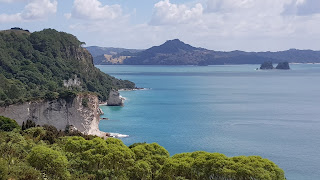Napier

The town of Napier is on the east coast of New Zealand's north island. It is famous for art deco architecture. An earthquake and susequent fire in 1931 killed 256 people and injured hundreds more. It is regarded as New Zealand's worst natual disaster. The town was rebuilt in art deco style which is a key tourist attraction. There are several vintage cars around the town. Some of these take passengers on a guided tour of the buildings, raising money to help preserve the cars.












